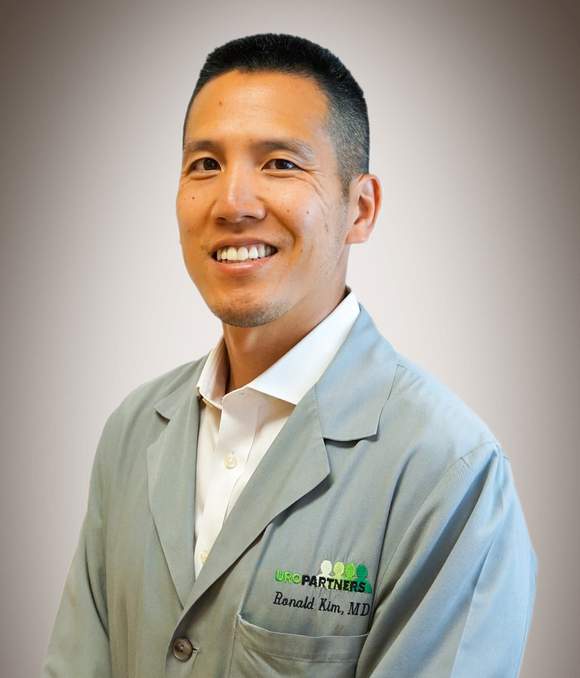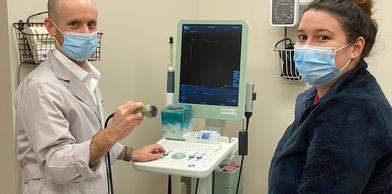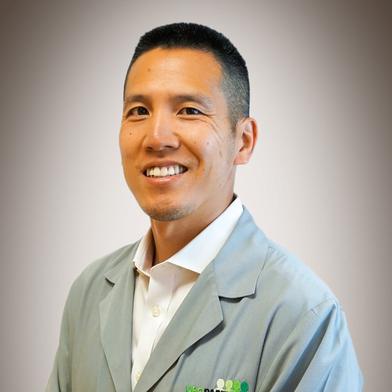“I’m still alive,” says Darrell Borger – a lifelong resident of Somers, father of two, grandfather of four, and retired City of Kenosha employee.
Darrell is one of millions of men in the U.S. who, as they age into their fifties and beyond, develop an enlarged prostate – a gland that is part of the male reproductive system. In many men, this leads to benign prostatic hyperplasia – also known as BPH – which can cause them to urinate more frequently, especially at night. It can also cause sudden urges to urinate, a weak urine stream, and result in urine remaining in their bladder, where it can trigger other complications.
An estimated fifty-percent of men in their fifties have BPH. In men eighty and older, the number is ninety-percent.

Darrell Borger and his wife Andrea
Prostate cancer
BPH is not cancerous – and it is not believed to cause cancer – but the symptoms can be similar, and a biopsy of Darrell’s prostate revealed cancer cells. Prostate cancer tends to be slow-growing, so some patients may choose to delay treatment while keeping a close eye on the development of their disease. “But that was a gamble I didn’t want to take,” Darrell says. “I didn’t want to wait for something bad to happen, so I decided to have my prostate removed.” That’s when Darrell met Dr. Ron Kim, a urologist at Froedtert South.
“I was impressed with Dr. Kim from the first time I met him,” Darrell recalls. “He was very straightforward with me and told me what needed to be done and how he was going to do it.”
“When a biopsy confirms that a patient has prostate cancer,” Dr. Kim says, “I talk with them about their treatment options, which may include surgery. In cases where removing the prostate is the right choice, I perform minimally invasive robotic-assisted surgery.”

Ronald Kim, M.D.- Urologist
Minimally invasive surgery
“With robotic-assisted surgery, the incisions are tiny compared to traditional open surgery,” Dr. Kim says. “The recovery is much faster than with the traditional open surgery that used a large incision. With robotic prostatectomy, I make five small incisions, no bigger than the width of a fingernail. I remove the prostate and surrounding lymph nodes, restore the patient’s urinary function, and then close the small incisions. And unlike the traditional surgery, with robotics the blood loss is so minimal that we never have to give anyone a transfusion.”
“Most patients go home the next day,” Dr. Kim says, “able to walk and eat normally. They will likely feel some pain around the incision sites, but that is temporary and controllable. They will use a catheter to urinate for a week or so after the procedure.”
“There was no severe pain,” Darrell says. “Only a couple of weeks after the surgery, I was back to doing my part-time job. It was a very fast recovery. The incisions were so tiny that most of them were closed with one stitch, so the scars are barely noticeable,” Darrell says, “and my blood tests continue to confirm that the cancer is gone. I’ve been very fortunate.”
“I’m happy to say that Darrell is doing very well, as most patients do,” Dr. Kim says. “He is very happy with the whole experience, and is functioning just as he was before surgery. He’s still working part-time. This didn’t interrupt his lifestyle at all, and he's not unique. Lots of our patients have the same experience.”

Darrell Borger
Excellent outcomes
“The surgery we perform is a very effective way to treat prostate cancer, but patients do worry about permanent incontinence or erectile dysfunction,” Dr. Kim says. “The fact is a large percentage of our patients do not experience these long-term side effects. People can feel comfortable about that.”
“To get the best outcomes, you want to have this surgery in a hospital that does a lot of them, and that’s Froedtert South,” says Dr. Kim. “We perform a large number of these surgeries - I’ve been performing them for over ten years. We do these surgeries week in and week out here.”
“As it turned out, my prostate cancer was a relatively aggressive type,” Darrell says. “If I hadn't had the surgery, I might not be telling my story. I highly recommend Dr. Kim. He’s a really good surgeon, and he's got a terrific bedside manner.”
“After surgery, I’ll see a patient for the next five to ten years,” Dr. Kim says. “In my experience, patient outcomes are more successful in the sense that they recover much faster, have much less incontinence, and get back to work much faster.”
Care close to home
“The great thing about Dr. Kim and Froedtert South is I didn't have to go to Milwaukee or Chicago,” Darrell says. “I didn't even have to leave town to get leading edge surgery. I had it done right here, close to home.” “You don't have to travel somewhere else to have this surgery,” Dr. Kim says. “Patients get a high level of care and excellent outcomes from the very experienced surgeons here at Froedtert South.”
Prostate cancer by the numbers
According to the American Cancer Society:
- Prostate cancer is the most common cancer in American men other than skin cancer
- About one out of eight men will be diagnosed with prostate cancer during their lifetime
- Roughly six in ten cases of prostate cancer are diagnosed in men who are sixty-five or older
- The average age of men when they are first diagnosed with prostate cancer is sixty-six
Signs and symptoms of prostate cancer include:
- A slow or weak urinary stream
- A need to urinate more often, particularly at night
- Blood in the urine or semen
- Erectile dysfunction
- Pain in the hips, spine, ribs, or other areas from cancer that has spread to bones
- Weakness or numbness in legs or feet, or loss of bladder or bowel control, from cancer pressing on the spinal cord
Many of these symptoms can be caused by something other than prostate cancer, but it is important to tell your doctor if you experience them to the cause can be found and treated.


